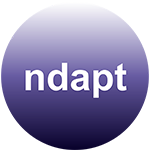In the first of a three-part series, we explore viewing the management of your pension scheme through a new lens.
Pin-Nee Tang, Director, and Partner at ndapt, authors this first article on the importance of managing your pension scheme as a business and delves into the aspect of building the right leadership team.
Re-imagining your DB pension scheme
The pandemic has been a catalyst for many businesses to re-set their priorities, re-assess their value proposition, and re-imagine the art of the possible. How about re-imagining what companies can do with their defined benefit (DB) pension schemes?
If a DB scheme were a subsidiary of a company, the managers of that company would run it like a business, seeking to optimise risk-adjusted returns on capital. The sad truth though is that many companies do not view their DB schemes this way and may have missed opportunities to preserve or potentially create value within these pension schemes.
While DB schemes are set up under trust law to be independent of the company, they are not truly independent because usually they rely on the company to underwrite any losses or underperformance. If the deficit worsens, it is typically the company that bears the risk of paying additional cash contributions. The company has all the downside but often little or none of the upside as surpluses are practically inaccessible.
Yet, despite this imbalance, many companies continue to take a largely reactive approach to managing their risk exposure, leaving it mostly to the hands of the trustees.
If we are to re-imagine a DB pension scheme as a business, then what would we do?
Build the right leadership team
Business leaders lead their teams to success. The right board of trustees would do the same. A trustee board, just as the board of any important business, should not be left to chance but carefully formed to deliver results. Have you got the right board composition in terms of number of trustees, skills, experience, diversity, and board culture? Are they aligned with the corporate ethos and goals?
Pension scheme trustees generally have a reputation for being slow and insufficiently commercial, progressive, or dynamic. This is in part due to the inherited system of a more lax approach towards appointing trustees. However, the tide is changing.
The Pensions Regulator is pushing to raise the standards of governance and we are seeing increasing use of independent professional trustees. If the UK Corporate Governance Code were the gold standard, the average UK pension scheme still has some way to go.
Having the right trustee board needs to correspond with having the right counterparts to shape and drive the pensions agenda on the company side. A common frustration amongst trustees is the indecision or lack of constructive engagement by the company. When both leadership teams work collaboratively, they can achieve better outcomes.
How we’ve put this into practice
Four defined benefit pension schemes with the same trustee board and sponsoring company were plagued by a variety of issues for years ranging from unresolved complex benefit rectification to disproportionate adviser spend. The sponsor agreed to move to a sole trustee who would address the issues head on and engage constructively with them and their corporate pension adviser.
In a short space of time, we built trust and collaboration with the sponsor. Within twelve months, most of the benefit rectification issues were fully resolved, better controls were put in place including a review of adviser spend and scope leading to 20% reduction in fees.
The right trustee ensures members’ interests are protected but also that the schemes are managed more effectively, leading to better outcomes overall.
To discuss the above, or any other aspect we can help with, please get in touch by emailing pin-nee.tang@ndapt.com








